Welcome to Corfu
At the northern side of the Ionian Sea, the charming island of Corfu carries a rich historic past, with influences from the Venetian, French, and English cultures that shaped the island’s unique architecture. Its picturesque town, mansions, palaces, and gorgeous beaches make Corfu a top destination in western Greece. Corfu (Kerkyra in Greek), unlike the rest of Greece, never fell under the Ottoman oppression. Due to the successive dominations of the Venetians, the French and the British over the centuries, the island has primarily become part of the Western rather the Levantine world. Their culture wielded strong influence in the city: it was here that the first Greek University (the Ionian Academy), the first Philharmonic Orchestra and the First School of Fine Arts were founded. With the passage of time the island of Corfu may have changed, but any traveler can still feel the spirit of a distant glorious past. Its rich multi-cultural heritage, its historic monuments, its stunning natural landscape, its crystal clear seas, and its excellent weather all year round explain why Corfu is one of the most cosmopolitan Mediterranean destinations weaving a powerful spell on its visitors.

In the beautifully preserved Old Town of Corfu, a UNESCO world heritage site, Renaissance, Baroque and Classical “repertoire” came to be successfully applied to local artistic traditions. Palaces, fortresses, austere public buildings of the Venetian rule uniquely blend with lines of drying washing in tiny alleyways and small secluded squares. Strolling through a complex of narrow cobbled streets with stairways and vaulted passages, the so-called “kantounia”, will make you feel as if you’ve travelled to Genoa or Naples.
The name Spianada is derived from the Italian word spianare which is translated to “to level”. The reason is that, when the square was created (around the 16th century), the Venetians decided to tear down all structures around the Old Fortress for the locals to have increased visibility and a larger field of fire in the case of an invasion. Others believe that it is a paraphrase of the English word “esplanade”. Spianada became a square much later, though. It was the construction of the majestic Liston complex of residencies (built by the French) and the Palace of Michael and George (built by the English) that turned Spianada into the most significant area and the most cosmopolitan meeting point of Corfu.
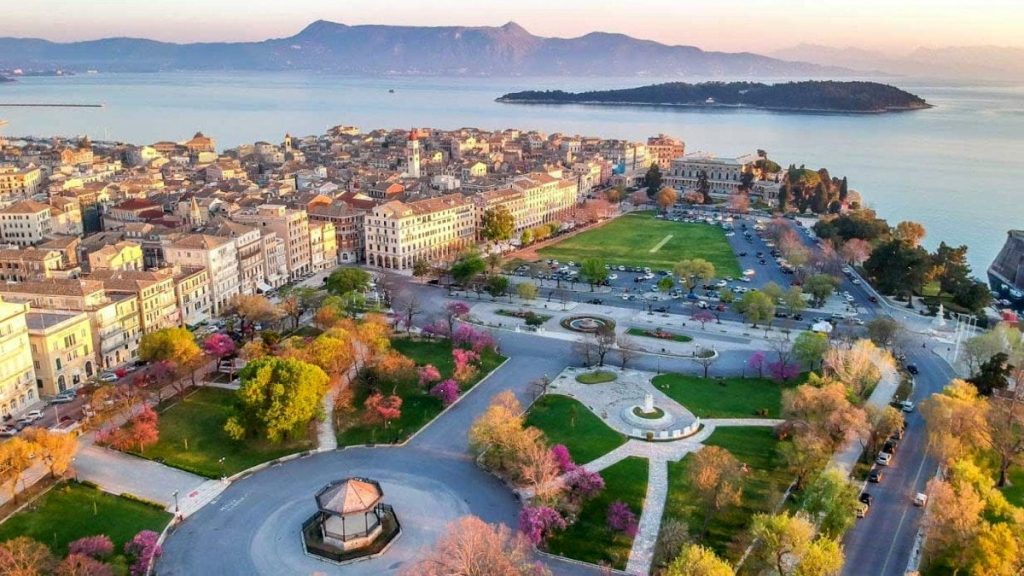
The Old Fortress is one of the most impressive fortification works in Greece. It is the first thing visitors encounter as the ferry approaches Corfu. It stands on the eastern side of the town, on a rocky peninsula that gets into the sea. This fortress is called Old in contrast to the New Fortress (of Saint Mark), which was also built to protect the town from enemies and pirates. The fortifications were constructed over a period of about 15 centuries. During this time frame, three phases stand out regarding the works – the Byzantine, the Early Venetian and the Late Venetian period. It was during the latter that the buildings in front of the fortress were leveled and the marvelous Spianada Square was built. The town was under Venetian rule until 1797 when Napoleon conquered the Venetian Republic. From 1807 to 1814, the island was ruled by the French. The English succeeded them, remaining in Corfu until 1864 when the island became a part of the Greek state.

The Archaeological Museum of Corfu exhibits findings from several excavated sites in the wider region of the island, like Paleopolis, Kanoni, Garitsa and Kassiopi. The museum is housed in a modern building donated by the municipality of Corfu, on Vraila Armeni Str., close to the bay of Garitsa. Constructed in 1962-65 and inaugurated in 1967, the Archaeological Museum of Corfu was originally founded to host the important findings from the ancient temple of Artemis in Kanoni; however, two more rooms were later added, when new exhibits were brought to light. The museum houses findings dating from Prehistoric to Hellenistic times. The collection consists of bronze and marble statues, funeral offerings, ancient coins, clay pottery, golden jewelry and parts of ancient temples. The most important exhibit of the museum is the impressive Medusa pediment from the temple of Artemis, dating from 585 BC. Other impressive exhibits include a stone lion of Menecrates, which was probably a funeral offering to the famous politician, a limestone pediment from a temple of Dionysus, 13 identical small statues of goddess Artemis and a marble torso of Apollo.

The church of Saint Spyridon was initially built in Sarocco Square. However, in 1590 it was erected in its present location. The architecture of the church is typical of the Venetian architecture that dominates the Old Town of Corfu. Its bell tower is the highest spot of the town and this is the first thing that you see as the ferry approaches the island. The locals have deep faith in Saint Spyridon, who is considered the patron saint of Corfu. Inside the church, which is located just behind Liston, rest the remains of the saint. According to the local customs, his remains are carried around the town of Corfu in a very peaceful litany four times a year to celebrate his miracles (Palm Sunday, Good Friday, August 11th, first Sunday of November). The litanies are accompanied by local bands and they remain a strong tradition in Corfu.
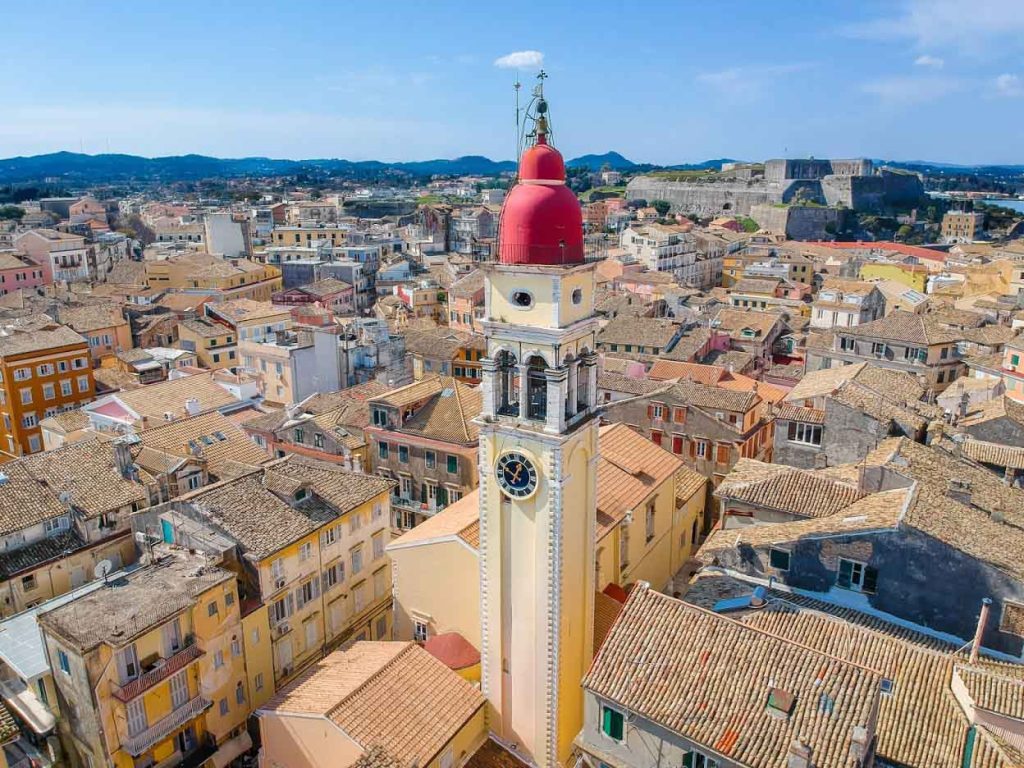
The Museum of Asian Art in Corfu is the only museum of its kind in Greece. It is housed in an imposing neoclassical building near Liston promenade (Spianada Square), inside the Palace of Saint Michael and Saint George. The building was constructed between 1819 and 1824 by the British and initially served as the residence of the British High Commissioners of the Ionian islands. In 1967, the Palace was given to the Municipality of Corfu and housed the Archaeological Museum for some years. Then, until 1974, it functioned as a Sino-Japanese Museum. Later on, it turned into an Asian museum to host the collection of Gregorios Manos, an ambassador who had donated a great range of Asian items and works of art to the municipality. The exhibits of this museum were endowed with the collections of N. Hatzivassiliou, Ch. Hiotakis, and others. Exhibits include items from China, Japan, India, Pakistan, Korea, Siam, Tibet, Nepal, Cambodia, and Thailand. Among the items displayed, you will find Samurai armor and weapons, masks of the Noh theatre, pieces of Chinese porcelains and bronzes and pieces of sculpture and ceramics. The exhibits are compartmental. The ground floor of the museum used to be the hall of the Ionian Senate and portraits of the Senate’s presidents are hung there. The second floor features the throne room, the ballroom, and the dining room, with the medals of the Chivalric order painted on the walls.

Corfu Kanoni and Mouse Island
The location of Kanoni with the church of Panagia Vlacherna below and the Mouse Island (Pontikonisi) are the most famous and photographed spots of Corfu. Kanoni is actually a district of Corfu Town, just a couple of kilometers from the city center. It took its name from an old cannon that stands on top of the hill. This hill is lush green and has many luxurious hotels and local residences. Some steps go down the hill from Kanoni; after descending, you reach the small church of Panagia Vlacherna. A narrow 300m passageway connects the island with the church. Constructed in the 17th century, this lovely chapel has an impressive wooden-carved iconostasis and beautiful frescoes inside. The roof has red tiles and above the gate entrance appears a tall bell tower. Fishing boats depart frequently from the church and go to the legendary Mouse Island in just 5 minutes. The green island was named like that due to its tiny size. According to mythology, this is the ship of Odysseus that was stoned by the god Poseidon. In the center of Mouse Island, there is the 13th-century church of Pantokrator. This church celebrates on August 6th when a large religious fest (panigiri) takes place. On top of the hill in Kanoni, lie two cafeterias with amazing views of the church of Vlacherna, the sea, and Mouse Island. It is also very usual to see an airplane landing and taking off from this spot, as the airport of Corfu is right next to the church. Another longer passageway connects the church of Vlacherna with the opposite area of Perama.
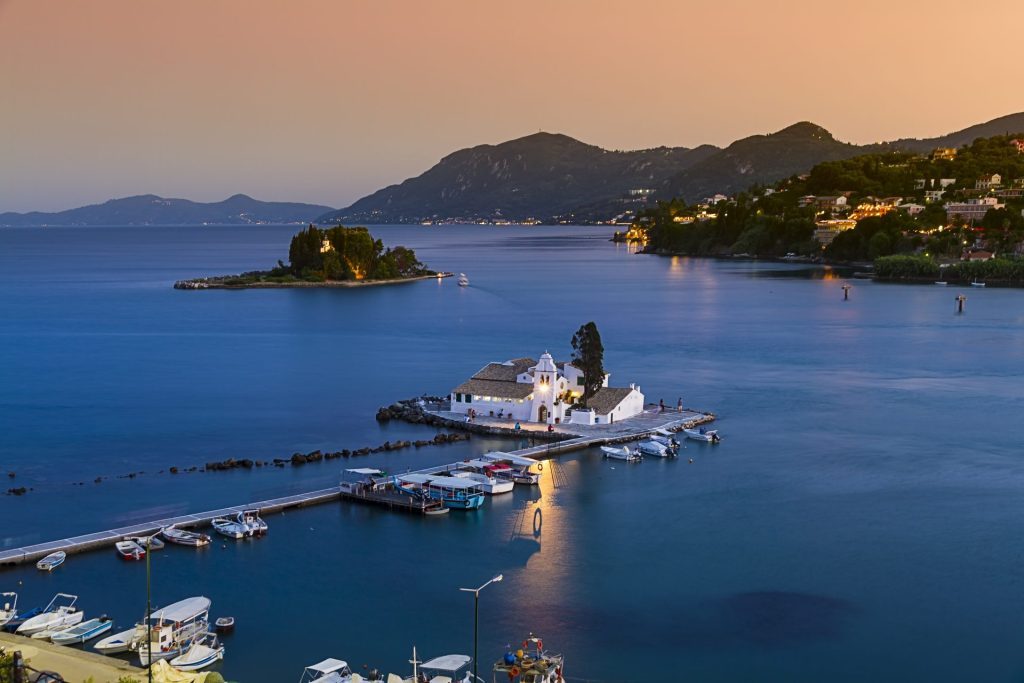
Achillion Palace
The Achillion Palace is ideally located in the picturesque village of Gastouri. This magnificent Palace was built in 1890 for the former Empress of Austria, Elizabeth (Sissy). The building used to serve as her summer retreat. Unfortunately, the Empress passed away in a rather tragic manner when she was brutally assassinated in 1898 in Geneva and the palace was deserted until 1907 when it was bought by Kaiser Wilhelm II of Germany. The palace is located in a place of mesmerizing beauty with the coast down below, which still has the jetty where the Kaiser would embark on his cruises. The Palace is not only renowned for its classical features. The impeccable palace garden is absolutely top-class and makes for a picture-perfect setting. Legend has it that the Empress fell so much in love with Corfu, that she ultimately decided to build a residence that she could call her own. The palace is located at the spot where the manor of the renowned philosopher Petros Vrailas Armenis stood. Empress Elisabeth was also captivated and awestruck by ancient Greek legends and mythology. Her favorite hero was Achilles on whose honor she dedicated the palace. The garden of the palace is replete with rather artistically sculpted statues of the pantheon of Greek Gods and Goddesses that makes for a truly mythical setting.

Mon Repos Palace
Mon Repos Palace is situated on top of Analipsis Hill, near the Kanoni area, in the middle of a beautiful setting full of greenery. It was built in 1826 by British Commissioner Frederic Adams as a gift to his wife, Nina Palatianou, who came from Corfu. It is a small but very beautiful palace with colonial architectural elements. Later on, the palace became the summer residence of all British governors of Corfu and when the Ionian Islands were united to Greece, in 1864, it was given as a gift to King George I of Greece. This is also the house where Prince Phillip, Duke of Edinburgh, the husband of Queen Elisabeth II, was born on June, 10th, 1921. During the Italian occupation of Corfu, in the Second World War, this palace became the residence of Parini, the Italian governor of the Ionian Islands.
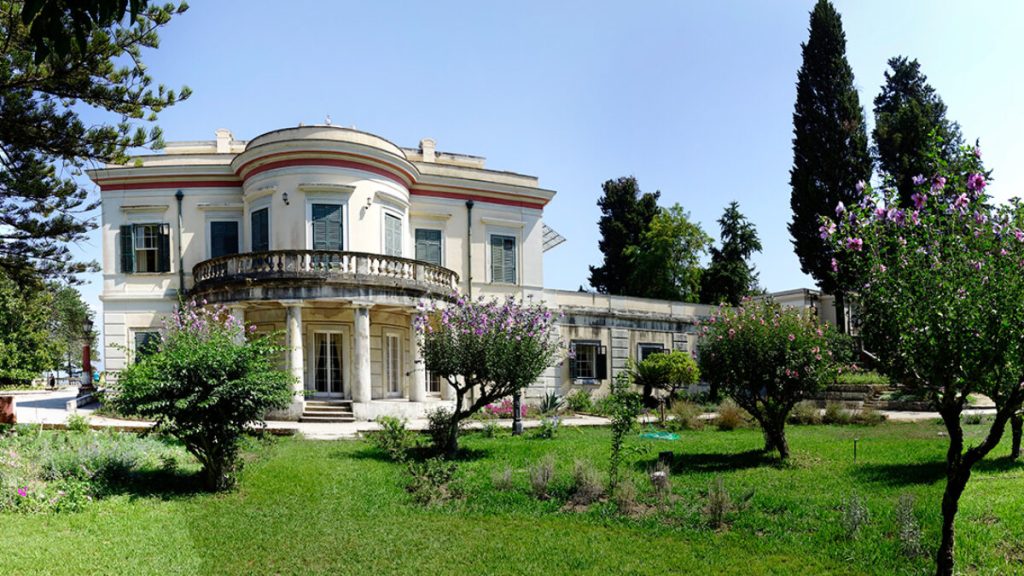
Angelokastro Castle
Angelokastro, also referred to as Angel Castle, is strategically located in proximity to Krini. It is believed to date back to the 13th century. Angelokastro is conspicuous by its domed gate at the entrance. It boasts of priceless vestiges and there are exclusive storage rooms as well. Another interesting remnant is an ancient church dedicated to the angels Gabriel and Michael which is surprisingly constructed in a cave. Legend has it that an ancient emperor was on the lookout for a precipitous rock to build a fortress so that it could easily thwart most pirate attacks. With this in mind, the emperor stumbled upon the neighborhood of Angelokastro where he came across the towering fortress that was reportedly built by the then Archbishop of Epirus. The primary reason why the fort was built was to shield the inhabitants from pirate attacks. The major threat emanated from pirates from Africa and the Venetians. According to historical records, Angelokastro was the capital of the island of Corfu and the Governor himself resided here. Historians are of the opinion that in the infamous pirate attack of 1403, the inhabitants of Angelokastro fought tooth and nail from the fortified castle against the Genoan pirates.
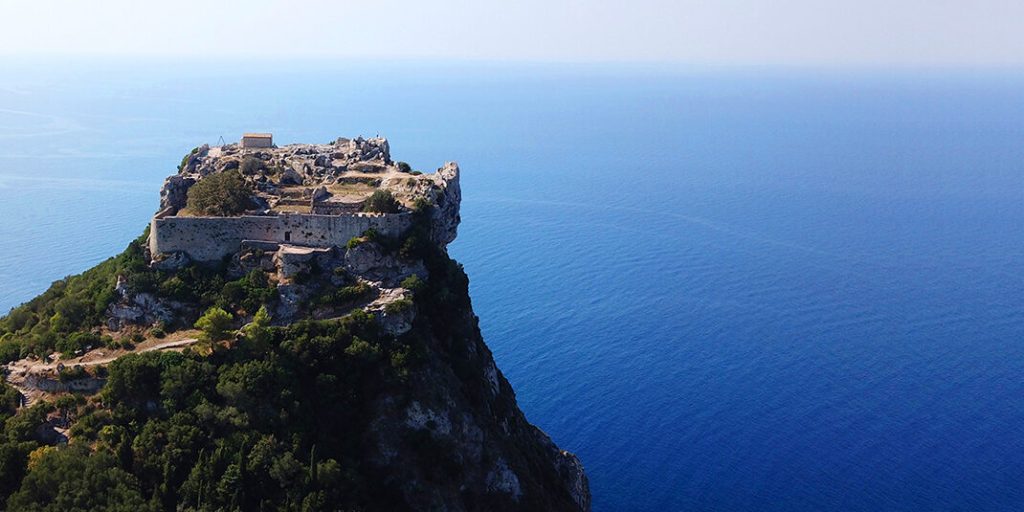
Paleokastritsa Monastery
On a green hill above the beach of Paleokastritsa, on the northwestern side of Corfu, stands a large Monastery complex dedicated to Panagia (Virgin Mary) of Paleokastritsa. This monastery dominates the whole region. Built atop a remote hill, it offers a gorgeous view of the island and the sea. This Byzantine Monastery dates back to 1228, however the current complex, the cells of the monks and the yard date from the 18th century. The monastery has a small ecclesiastical museum with rare Byzantine icons, holy books, and other relics. Inside the monastery lies a traditional olive oil press, too. The road to the monastery passes through a forest of olive trees and cypresses, making the ascend a lovely experience
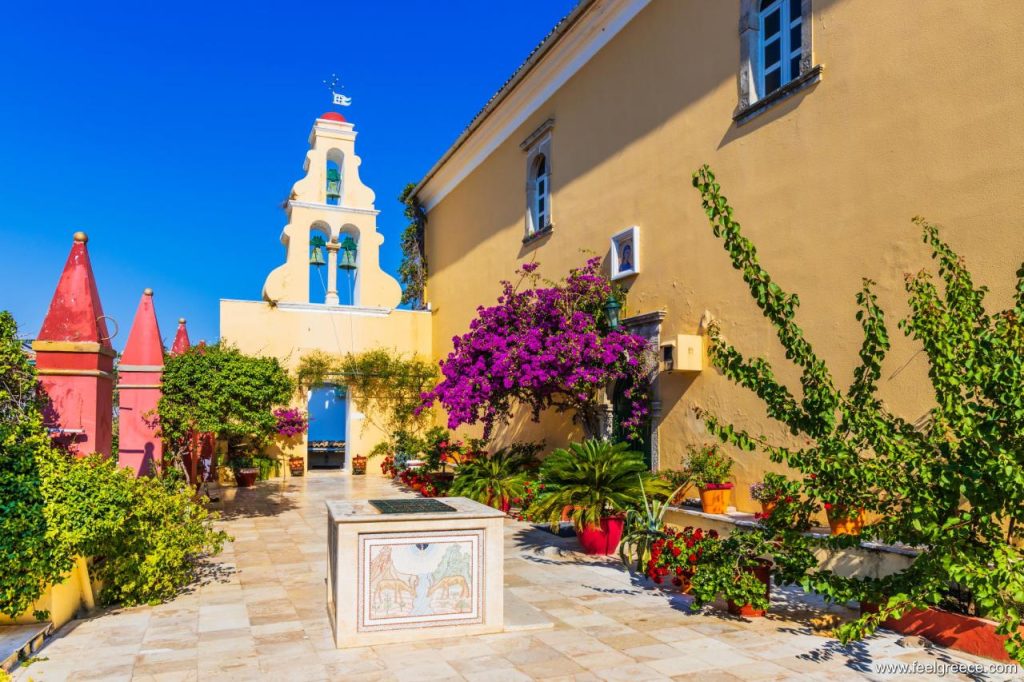
With clean water and surrounded by lush greenery, beaches in Corfu Greece attract many visitors every summer. Both organized and pristine beaches are part of the island’s coastline. The list of beaches is endless, from secluded picturesque coves to large, vibrant stretches of sand with beach bars, tavernas, shops and water sports.
-Paleokastritsa Beach in Corfu: Getting its name from the old fortress at the Monastery of the Virgin Mary (near the Corfu Aquarium), Paleokastritsa consists of about six sand-and-pebble-filled seashores, all of which are surrounded by gorgeous olive trees! The main beach of Agios Spiridon hosts awe-inspiring teal waters and a lengthy, sandy coast in its U-shaped shore.
-Agios Gordios Beach in Corfu: The beautiful west-Corfu shore of Agios Gordios features coarse sand along its golden shore, as well as some gravel! It functions as a prime beach visit amongst all locals and tourists, given that it has a mesmerizing mountainous background and a shallow seabed, making it ideal for families with children! Plus, you can also spot a rusty shipwreck on one end of the shore.
-Rovinia Beach in Corfu: The awe-inspiring Rovinia Beach is one of the finest seashores in the Ionian Sea, boasting a mesmerizing white-pebble seashore mixed with sand, along with dreamy crystal-clear turquoise waters! Snorkeling lovers will love its majestic seabed, whereas experienced swimmers will also have a chance to discover plenty of jaw-dropping sea caves at a swimming distance! Despite its quite steep descent, Rovinia gets quite crowded during the high season.
-Myrtiotissa Beach in Corfu: Located between the villages of Vato and Pelekas, Myrtiotissa is a gorgeous shoreline with fine golden sand and clear teal-colored waters! Showcasing a rocky seabed, it is an ideal visit for snorkeling enjoyers, though the beach is mostly an unofficial destination for naturists! Plus, the beach is surrounded by large olive groves, providing some gorgeous scenery.
-Rovinia Beach in Corfu: The awe-inspiring Rovinia Beach is one of the finest seashores in the Ionian Sea, boasting a mesmerizing white-pebble seashore mixed with sand, along with dreamy crystal-clear turquoise waters! Snorkeling lovers will love its majestic seabed, whereas experienced swimmers will also have a chance to discover plenty of jaw-dropping sea caves at a swimming distance! Despite its quite steep descent, Rovinia gets quite crowded during the high season.
-Bataria Kassiopi Beach in Corfu: One of the most picturesque beach destinations in Corfu, Bataria is filled with stunning white-colored pebbles and crystal-clear turquoise waters, creating a gorgeous color combination for your eyes to feast on! Due to its deep seabed, a number of visitors snorkel in the waters of Bataria, though it is also an ideal destination for casual swimming, sunbathing, and enjoying the views toward the mountainsides of Albania.
-Sidari Canal d’Amour Beach in Corfu: Quite possibly the most tourist-filled area in all of Corfu, Sidari hosts the one-of-a-kind Canal d’Amour Beach (translated into Channel of Love). Reminding visitors of a lunar landscape, Canal d’Amour is a unique bay area surrounded by large cliffs. It features crystal-clear waters, coarse sand along its shoreline, a shallow seabed, and a plethora of awe-inspiring narrow caverns and water caves!
-Glyfada Beach in Corfu: Glyfada is a Blue-Flag seashore surrounded by large, beautiful mountains. The beach showcases fine golden sand, clear blue waters, and quite a shallow seabed! Starting off as a quiet shore, Glyfada Beach evolved into a crowded, cosmopolitan beach destination through the years, making it ideal for young adults and for partying purposes!
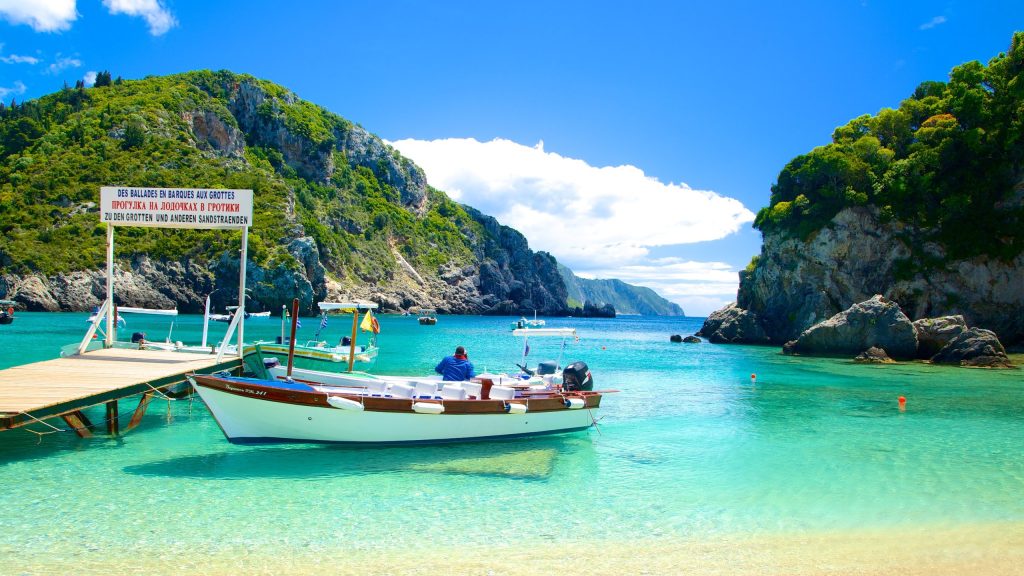
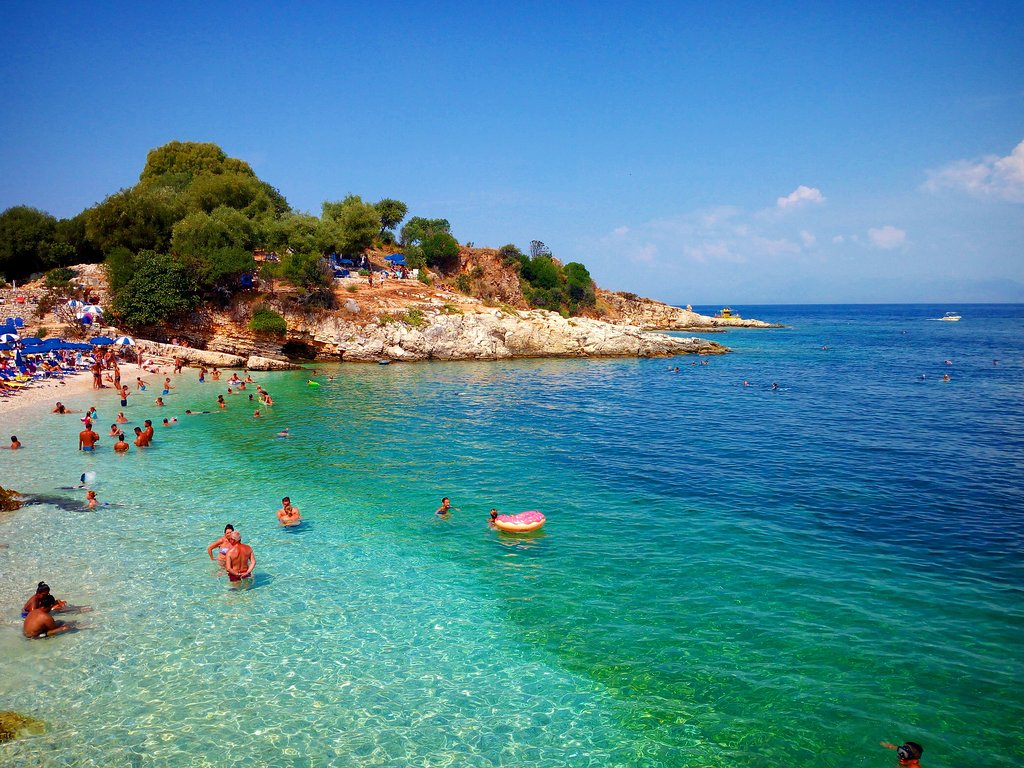
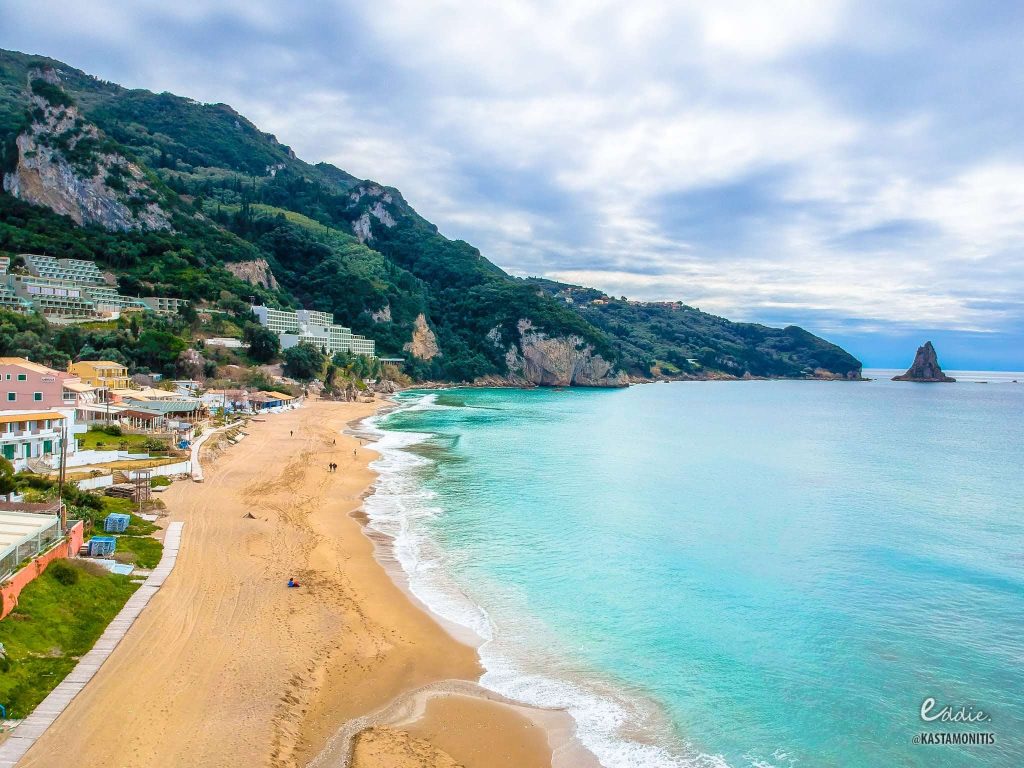
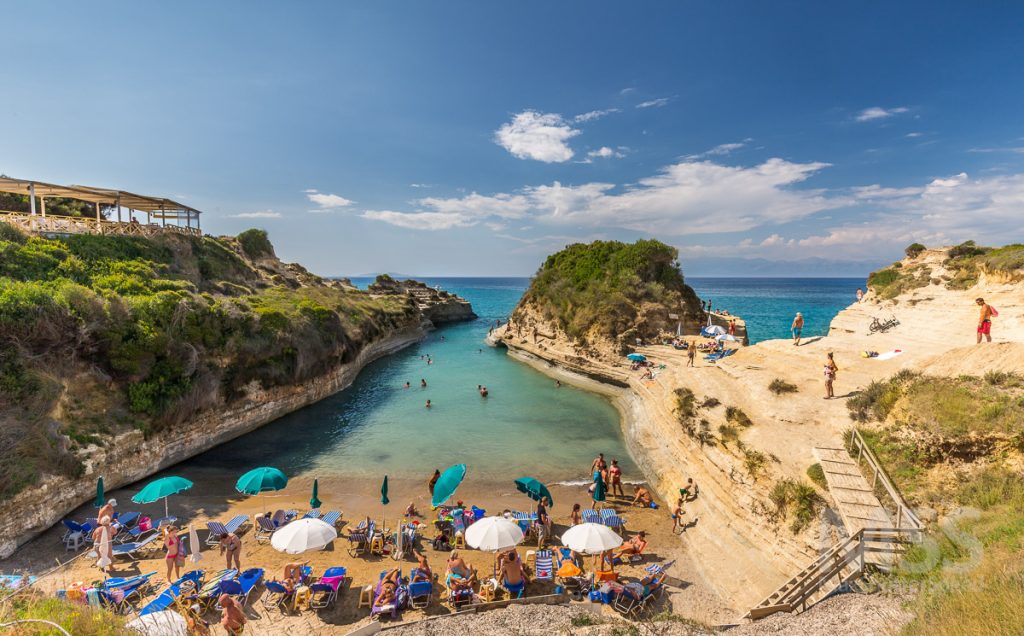
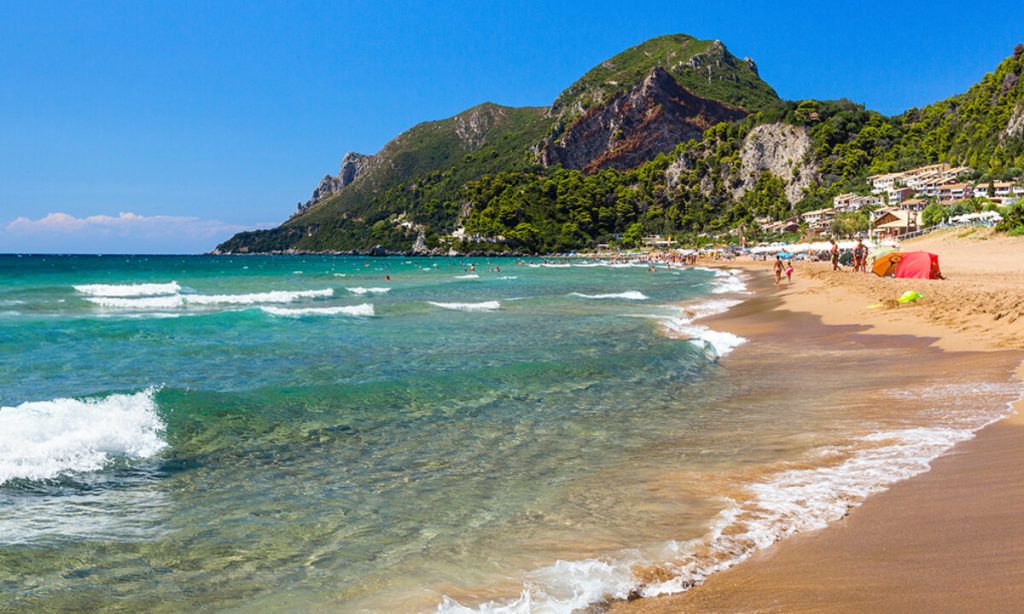
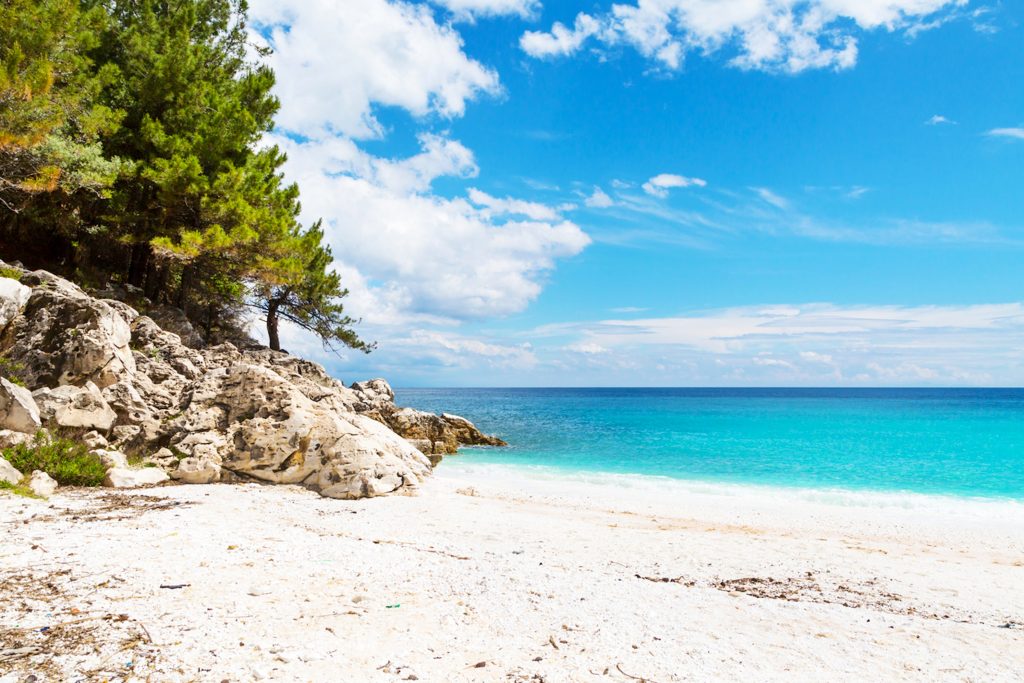

Getting to Heraklion
By Ferry
Corfu has ferry services both by traditional ferries to Gaios in the island of Paxoi and as far as Patras and both traditional ferries and advanced retractable airfoil, hydrodynamic-flow, high-speed ferries called “Flying Dolphins” to Igoumenitsa . The small port of Lefkimmi is also to be found at the southernmost tip of the island on Cape Kavos, offering a ferry service to the mainland.
By Plane
Corfu is connected to Athens International Airport, the flight lasts 1 hour but also to Macedonia International Airport (Thessaloniki), it is also connected to other airports in Greece. The airport is called Ioannis Kapodistrias International Airport.
Sources: https://www.greeka.com/ionian/corfu/ , https://www.visitgreece.gr/islands/ionian-islands/corfu/, https://en.wikipedia.org/wiki/Corfu
–